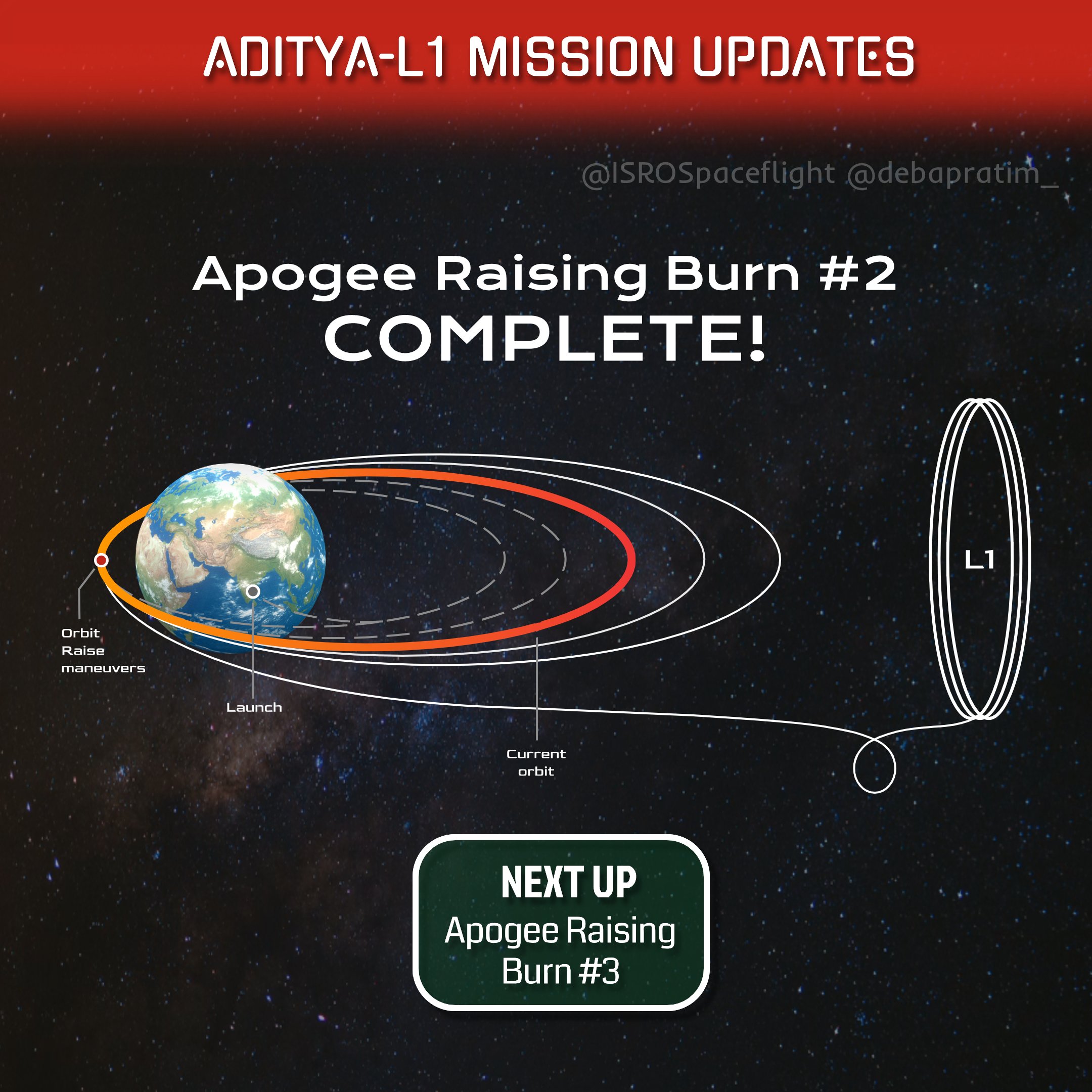Report by Shreya Tibrewala
On September 2, 2023, India launched the Aditya L1 Mission to study the sun.
This spacecraft was launched from the Satish Dhawan Space Centre in Sriharikota, Andhra Pradesh. The director of this mission is Dr. Nigar Shaji. This satellite was launched on 2nd September, 2023 at 11:50 am India time.
What is the Aditya L1 Mission?
The Aditya L1 Mission is a satellite designed to study the Sun. Aditya refers to “Sun” in Sanskrit. L1 is the Lagrange Point 1 of the Sun-Earth relationship. The gravitational forces of two planets, such as the Sun and Earth, are in balance at L1. This allows the object to stay steady in space. The L1 point was originally discovered in 1995 by ESA (European Space Agency) and NASA (National Aeronautics and Space Administration).

Timeline of the Aditya L1 Mission
The spacecraft will stay in Earth’s orbit for the first 16 days before heading towards the Sun. During this time, it will go through 5 maneuvers to gain the necessary velocity (speed) for its journey.
Aditya-L1 will perform a Trans-Lagrangian1 entry manoeuvre, indicating the start of its 110-day journey to the destination near the L1 Lagrange point.
When Aditya-L1 arrives at the L1 point, another manoeuvre will fix it into an orbit around L1.
The satellite will spend its whole mission orbiting around L1.

The satellite is going to stay 1.5 million kilometers away from the Earth, towards the Sun.
Special Features of the Aditya L1 spacecraft
The spacecraft’s launch mass is 1,475 kgs and the payload mass is 244 kgs.
The primary metal used in the satellite is High Strength Alloy Steel, which can withstand high temperatures.
The instruments installed on this satellite are
- The Visible Emission Line Coronagraph (VELC). This provides insights into the Sun’s corona.
- The Solar Ultraviolet Imaging Telescope (SUIT). This captures images of the chromosphere.
- The Aditya Solar Wind Particle Experiment (ASPEX). This explores the Sun’s charged particle emissions.
- The High Energy L1 Orbiting X-ray Spectrometer (HEL1OS). This examines the Sun’s X-ray radiations.
- The Plasma Analyser Package For Aditya (PAPA). This studies the plasma surrounding our central star.
There is another interesting fact about the Aditya L1 Mission. The scientists working on this project were not allowed to use any perfumes in order to avoid any chance of the slightest contamination of the Visible Emission Line Coronagraph (the most important payload). The team working on the Visible Emission Line Coronagraph worked six-hour shifts in the ultra clean room, and didn’t even use medical sprays. The reason behind this is that even a single particle discharge could have ruined the hard work going into this massive project.

